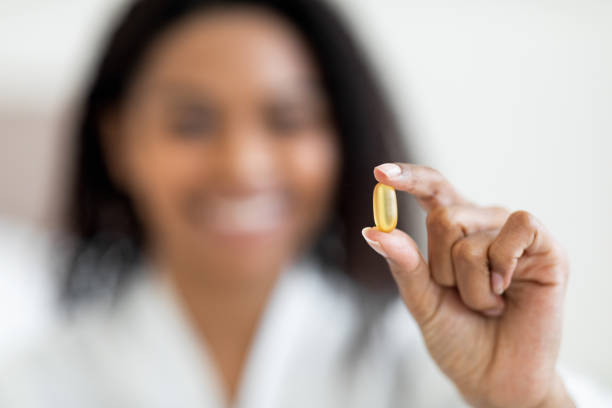Understanding Endometriosis & Fertility
Endometriosis is a medical condition that can affect a woman’s reproductive system. It occurs when the tissue that usually lines the uterus starts growing outside of it, leading to various symptoms such as pelvic pain, heavy menstrual bleeding, and infertility. Endometriosis, which affects almost half of all women who experience infertility, is one of the leading causes of female infertility.
Research indicates that women who are diagnosed with endometriosis have a reduced likelihood of conceiving compared to those who do not have the condition. The infertility rate among women with endometriosis can be as high as 30-50%. The presence of endometriosis can affect the uterus, fallopian tubes, and ovaries, leading to difficulties for the fertilized egg to implant and grow. This is why it is difficult for a fertilized egg to grow and implant in the uterus when endometriosis is present.
While there are treatments available for endometriosis, such as medication and surgery, they may have an impact on fertility. For example, surgery to remove endometriosis may also damage the ovaries or fallopian tubes, making it harder to conceive. This is why it’s essential for women with endometriosis to have a good understanding of their fertility and to explore options that may help them conceive while managing their condition.
As we’ve seen, endometriosis can significantly impact fertility, but there are ways to manage its effects. Fertility awareness methods are a way for women to track their menstrual cycles and determine their most fertile days. In the following section, we’ll explore some of the benefits of using fertility awareness for women with endometriosis.
Fertility Awareness Methods

Fertility awareness involves monitoring a woman’s menstrual cycle to identify the time of ovulation and increase the chances of conception. For women with endometriosis, fertility awareness may be a helpful tool in identifying potential fertility issues and improving chances of conception.
One of the critical benefits of fertility awareness for women with endometriosis is the ability to track changes in their menstrual cycle. This can help identify irregularities in the cycle and possible hormonal imbalances that may affect fertility. Women with endometriosis may determine their most fertile period by monitoring their menstrual cycle. This fertile window is when they are most likely to get pregnant. By keeping track of their cycle, women with endometriosis may identify this period and plan accordingly.
- The basal body temperature technique involves tracking the body’s temperature to identify ovulation.
- The cervical fluid technique involves monitoring the changes in cervical fluid to determine the fertile window.
- The symptom-thermal method combines the basal body temperature and cervical fluid techniques to identify fertile days.
The basal body temperature technique involves tracking daily temperature readings to determine when ovulation has occurred. Monitoring changes in vaginal discharge is used in the cervical fluid technique to identify the fertile window. This technique involves observing the variations in vaginal discharge. The symptom-thermal method consists in combining the basal body temperature technique with observations of cervical fluid, along with other fertility markers and physical signs of ovulation.
Overall, fertility awareness methods may provide women with endometriosis with a greater understanding of their menstrual cycle and improve their chances of conception. By tracking changes in their cycle and identifying their fertile window, women may optimize the timing of intercourse to increase their chances of conceiving.
Now that you have an understanding of fertility awareness methods let’s dive into how you can use them precisely to track your menstrual cycle and fertility signs with endometriosis.
Using Fertility Awareness with Endometriosis
Understanding and monitoring fertility signs is crucial for women with endometriosis, as the condition can significantly impact their ability to conceive. Fertility awareness methods provide a practical approach to this challenge.
Endometriosis often leads to irregular menstrual cycles, pain, and inflammation, complicating the tracking of fertility signs. However, by employing fertility awareness techniques, women with endometriosis may effectively monitor their menstrual cycles and identify ovulation signs. The symptom-thermal method, which tracks both basal body temperature and cervical mucus, is particularly useful in this regard.
It’s important to recognize that tracking fertility with endometriosis may necessitate extra vigilance. Hormonal fluctuations or changes in menstrual patterns may require adaptations to the tracking methods used. Collaborating with a certified fertility awareness educator who also specializes in functional nutrition and hormone health can help customize these methods to meet individual needs effectively.
Tips for successfully using fertility awareness with endometriosis include maintaining consistent and accurate tracking, employing multiple techniques (ex. BBT + CF) to cross-check and verify findings, and adopting lifestyle changes that promote hormonal balance and reproductive health.
Ultimately, fertility awareness not only enhances the chances of conceiving for women with endometriosis but also offers more support in managing symptoms effectively. In the next section, we will delve into specific benefits that fertility awareness provides for women managing endometriosis.
Benefits of Fertility Awareness for Endometriosis

Endometriosis can be a stressful and challenging condition. However, fertility awareness may be an effective tool in supporting those who are navigating this condition in managing their symptoms, improving reproductive health, and boosting overall well-being.
Here are some of the benefits of using fertility awareness for endometriosis
- Manage symptoms: Fertility awareness may help you identify patterns in your menstrual cycle and track symptoms associated with endometriosis, such as pain, bloating, and heavy bleeding. This information may be valuable for managing your symptoms and planning your daily activities.
- Improve fertility: Fertility awareness may help women with endometriosis conceive by identifying their most fertile days and timing intercourse accordingly. To increase your chances of conceiving, it’s important to keep track of your menstrual cycle and become familiar with the signs indicating your fertility.
- Natural contraception: Fertility awareness provides a natural and effective alternative to hormonal contraception, which may have adverse side effects for some women. By using fertility awareness to identify your fertile and non-fertile days, you may avoid pregnancy without compromising your reproductive health.
In conclusion, fertility awareness is an empowering tool for women with endometriosis. By understanding your body’s natural rhythms and signs, you can take charge of your reproductive health and achieve your family planning goals.
It is crucial to make well-informed decisions regarding your reproductive health, particularly if you suffer from endometriosis. Ensuring that you have all the necessary information to make the right decisions is crucial. Although fertility awareness may be a practical approach to managing endometriosis symptoms and enhancing fertility outcomes, it is essential to account for other factors that may impact your reproductive health. In the next section, we’ll explore some other important considerations to keep in mind when using fertility awareness with endometriosis.
Other Considerations
While fertility awareness may be a helpful tool for managing endometriosis and improving fertility outcomes, it’s essential to consider some additional factors. These include:
Professional Support
It can be helpful to work with a knowledgeable provider, such as a certified fertility awareness educator, functional nutrition and hormone specialist, or other healthcare professionals with experience working with endometriosis, to guide you through the process of using fertility awareness. They can support, answer questions, and help you interpret your fertility signs.
Importance of consistent and correct use of fertility awareness method
Maintaining consistency and accuracy is crucial when practicing fertility awareness. It’s important to use your chosen method consistently and correctly to get the most accurate results. This will involve tracking your fertility signs daily and carefully charting your data.
Supplementing fertility awareness with other endometriosis treatments

While fertility awareness can be a helpful tool for managing endometriosis symptoms and improving fertility outcomes, it’s important to remember that it’s not a cure-all. It may be necessary for certain women to combine fertility awareness with other endometriosis treatments, including nutrition and lifestyle modifications, to alleviate their symptoms and increase their likelihood of becoming pregnant.
By working with a knowledgeable provider, using fertility awareness consistently and correctly, and supplementing fertility awareness with other endometriosis treatments as needed, women with endometriosis can take an empowered approach to managing their condition and achieving their family planning goals.
Key Points & Conclusion
Taking into account the various considerations involved in using fertility awareness methods for endometriosis, it’s essential to work closely with a qualified fertility awareness educator. By doing so, you can ensure that you are consistently and correctly tracking your fertility signs while also supplementing your approach with other endometriosis treatments. With these steps in place, women with endometriosis can experience the many benefits of fertility awareness and take charge of their reproductive health.
Let’s quickly review the key points of this blog.
Key Points
- Endometriosis is a condition which impacts the reproductive system and can cause both pain and infertility.
- Fertility awareness methods can help women with endometriosis track their menstrual cycle and identify ovulation.
- Women who suffer from endometriosis can benefit from fertility awareness in both symptom management and increasing their chances of conception.
- Standard fertility awareness methods include a variety of techniques. The most comprehensive combination of techniques may be the symptom-thermal method.
- Working with a certified fertility awareness educator is essential to learn how to use these FAM correctly and consistently.
- Supplementing fertility awareness with other treatments may aid women with endometriosis.
- Fertility awareness also offers natural contraception options for women with endometriosis who want to avoid pregnancy.
- By using fertility awareness, women with endometriosis can take charge of their reproductive health and increase their chances of achieving their family planning goals.
Conclusion
It can be challenging for a woman to conceive due to the significant impact that endometriosis can have on her fertility. However, fertility awareness can be a valuable tool for women with endometriosis who are trying to conceive or manage their symptoms.
By understanding their menstrual cycle and tracking their fertility signs, women with endometriosis can gain a better understanding of their bodies and optimize their chances of conceiving. Women with endometriosis who want to prevent pregnancy can consider using natural contraception methods such as fertility awareness, which may be wonderful hormone-free option.
Working with a fertility awareness educator, functional nutrition and hormone specialist, or other healthcare providers who are trained to work with those navigating endometriosis is essential to ensure that you’re using the fertility awareness method correctly and consistently. Supplementing fertility awareness with other endometriosis treatments may also improve outcomes.
In conclusion, fertility awareness is a valuable tool for women with endometriosis who want to manage their condition and achieve their family planning goals. With proper care and root-level healing, women with endometriosis may improve their fertility outcomes.
About Majida

Sources
- Bailleul, A., Niro, J., Du Cheyron, J., Panel, P., & Fauconnier, A. (2021). Infertility management according to the endometriosis fertility index in patients operated for endometriosis: What is the optimal time frame? PLOS ONE, 16(5). https://doi.org/10.1371/journal.pone.0251372
- Barnard, N. D., Holtz, D. N., Schmidt, N., Kolipaka, S., Hata, E., Sutton, M., Znayenko-Miller, T., Hazen, N. D., Cobb, C., & Kahleova, H. (2023). Nutrition in the prevention and treatment of endometriosis: A Review. Frontiers in Nutrition, 10. https://doi.org/10.3389/fnut.2023.1089891
- Briden, L. (2018). Period Repair Manual: Natural Treatment for better hormones and better periods. Createspace Independent Publishing Platform.
- Duane, M., Stanford, J. B., Porucznik, C. A., & Vigil, P. (2022). Fertility awareness-based methods for women’s health and Family Planning. Frontiers in Medicine, 9. https://doi.org/10.3389/fmed.2022.858977
- Grey, A., & Bold, J. (2023). Integrated care for endometriosis: A qualitative study investigating nutrition and lifestyle factors. International Journal of Integrated Care, 23(S1), 194. https://doi.org/10.5334/ijic.icic23392
- Hendrickson-Jack, L. (2019). The fifth vital sign: Master your cycles & optimize your fertility. Fertility Friday Publishing Inc.
- Horne, A. W., & Missmer, S. A. (2022). Pathophysiology, diagnosis, and management of endometriosis. BMJ. https://doi.org/10.1136/bmj-2022-070750
- Li, B., Zhang, Y., Zhang, L., & Zhang, L. (2023). Association between endometriosis and metabolic syndrome: A cross-sectional study based on the National Health and Nutrition Examination Survey Data. Gynecological Endocrinology, 39(1). https://doi.org/10.1080/09513590.2023.2254844
- Maheux-Lacroix, S., Nesbitt-Hawes, E., Deans, R., Won, H., Budden, A., Adamson, D., & Abbott, J. A. (2017). Endometriosis fertility index predicts live births following surgical resection of moderate and severe endometriosis. Human Reproduction, 32(11), 2243–2249. https://doi.org/10.1093/humrep/dex291
- Mena, G. P., & McLindon, L. A. (2023). Fertility awareness education improves fertility cycle knowledge and may reduce time-to-pregnancy in subfertile women. Human Fertility, 26(2), 405–412. https://doi.org/10.1080/14647273.2023.2214952
- Mills, D. S., & Vernon, M. (2002). Endometriosis: A key to healing through nutrition. Thorsons.
- Morris, K.-A. (2006). Living well with endometriosis: What your doctor doesn’t tell you– that you need to know. HarperCollins Publishers.
- Norton, H. (2012). Take control of your endometriosis: Help relieve symptoms with simple diet and lifestyle changes. Kyle Books.
- Seckin, T. (2016). The doctor will see you now: Recognizing and treating endometriosis. Turner.
- Singer, K. (2004). The Garden of Fertility: A Guide to charting your fertility signals to prevent or achieve pregnancy – naturally – and to gauge your reproductive health. Avery.
- Weschler, T. (2015). Taking Charge of Your Fertility: The Definitive Guide to Natural Birth Control, Pregnancy Achievement, and Reproductive Health (20th Anniversary Edition). William Morrow Paperbacks.
- Zondervan, K. T., Becker, C. M., & Missmer, S. A. (2020). Endometriosis. New England Journal of Medicine, 382(13), 1244–1256. https://doi.org/10.1056/nejmra1810764
Disclaimer:
The information provided on this blog is for educational and informational purposes only and is not intended as a substitute for professional medical advice, diagnosis, or treatment. Always seek the advice of your physician or other qualified health provider with any questions you may have regarding a medical condition. The content on this blog is not meant to replace professional medical advice or to be used to prevent, diagnose, or treat any disease or illness. Reliance on any information provided by this blog is solely at your own risk.












